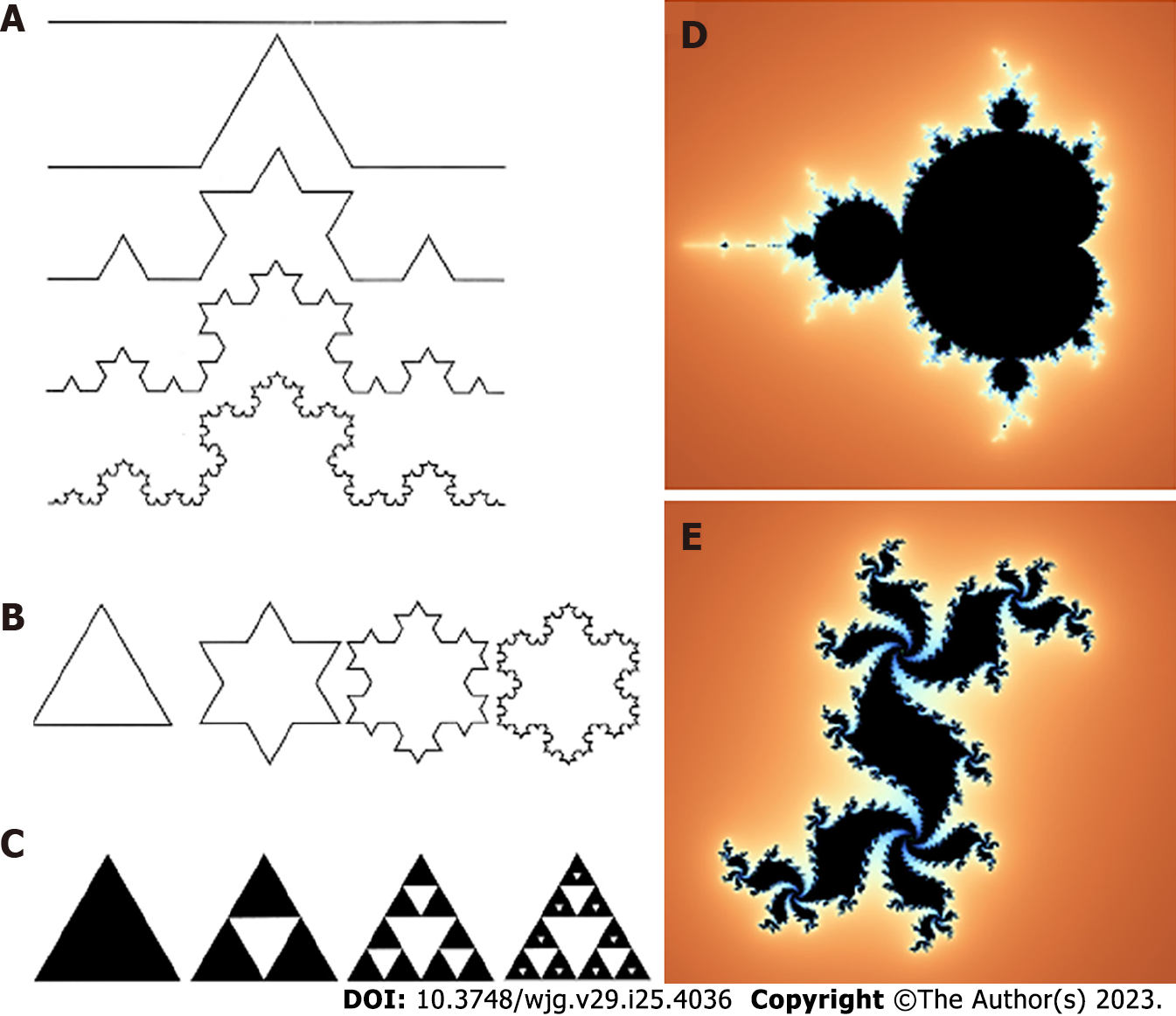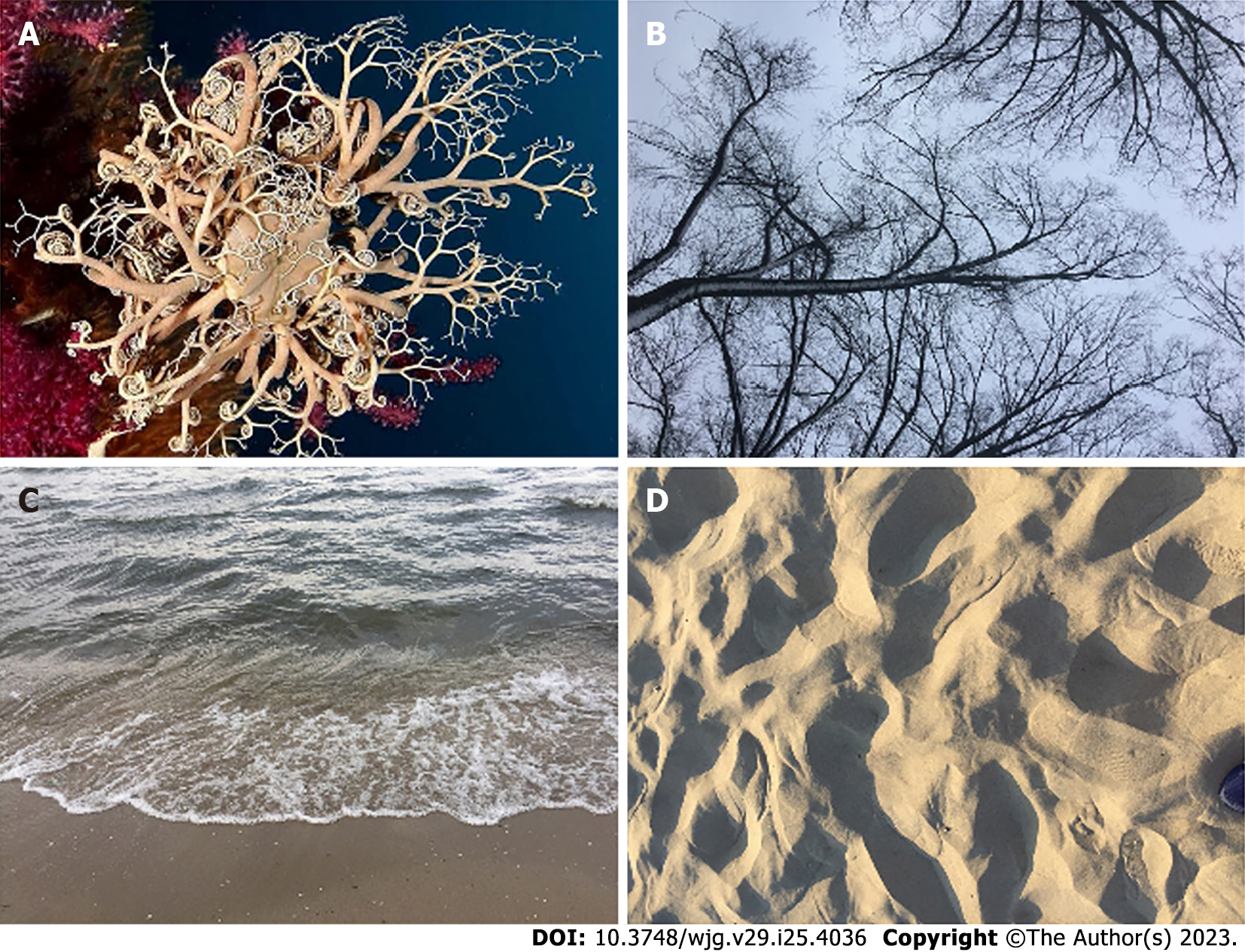Copyright
©The Author(s) 2023.
World J Gastroenterol. Jul 7, 2023; 29(25): 4036-4052
Published online Jul 7, 2023. doi: 10.3748/wjg.v29.i25.4036
Published online Jul 7, 2023. doi: 10.3748/wjg.v29.i25.4036
Figure 1 Examples of geometrical self-similar objects.
A: “Curve” from Niels Fabian Helge von Koch; B: “Snowflake” from Niels Fabian Helge von Koch; C: “Sierpinski triangle”; D: Mandelbrot set; E: Julia set named after the studies on the geometrical complexity by the French mathematicians Gaston Julia e Pierre Fatou.
Figure 2 Examples of natural statistical self-similar structures resembling mathematical fractals.
A: Marine invertebrates corals; B: Tree branches; C: Water breaking waves; D: Sand dunes.
Figure 3 Some self-similar tissues in the gastrointestinal system and their corresponding idealized mathematical fractals.
A: Intestine villi; B: Liver; C: Pancreatic Langerhans islet; D: Mandelbrot set; E: Diffusion-limited aggregation model; F: Julia fractal islet.
- Citation: Grizzi F, Spadaccini M, Chiriva-Internati M, Hegazi MAAA, Bresalier RS, Hassan C, Repici A, Carrara S. Fractal nature of human gastrointestinal system: Exploring a new era. World J Gastroenterol 2023; 29(25): 4036-4052
- URL: https://www.wjgnet.com/1007-9327/full/v29/i25/4036.htm
- DOI: https://dx.doi.org/10.3748/wjg.v29.i25.4036















